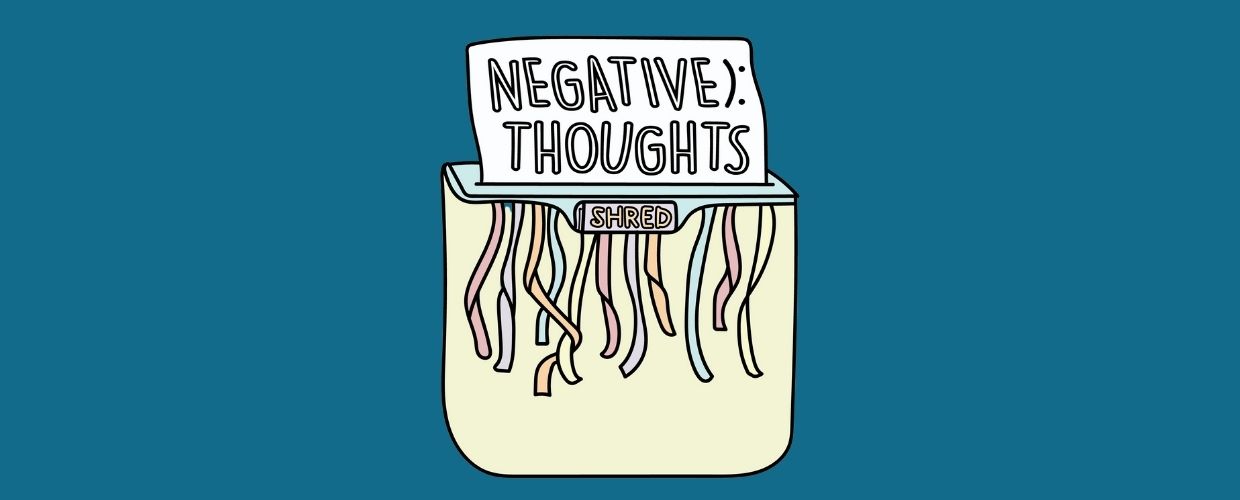Bring awareness to your negative thoughts
You can’t work on something if you’re not aware it exists. So, becoming aware of your negative thoughts is the first step towards learning how to deal with them. Once you’ve learned how to recognise negative thoughts and thought patterns, you can identify how they’re affecting your emotions and behaviours. Observe your thoughts and ask yourself questions like; what purpose is this thought serving? How does the thought make you feel? Is this thought helpful?
Identify thought distortions
Have you ever been guilty of a little self-sabotage? Chances are that self-sabotage was the result of cognitive distortion. That is, an exaggerated pattern of thinking that isn’t based on facts. Thought distortions convince you to believe, typically negative, things about yourself without truthful bearings. Common thought distortions include black-and-white thinking, filter thinking where you choose to only see the negative side of a situation, catastrophising, and personalising by assuming you are to blame for anything that goes wrong. When you learn to identify thought distortions, you put yourself in a position to challenge them.
Challenge your negative thoughts
Negative thoughts can impact how you view yourself, others and the world. When negative or distorted thoughts arise, consider whether these thoughts are accurate. Are you assuming the worst? Are you blaming yourself for something that isn’t truly your fault? Is there more to the story than your mind is making you believe? Is this really the worst that can happen? When you consider all facets of a situation, you enable your mind to calm and work through negative thoughts and perceived consequences.
Release judgement surrounding negative thoughts
No surprises here; your internal dialogue can be judgemental. With the constant desire to live up to expectations and compare yourself to others, there’s no wonder why the mind flows in a negative manner on occasion. And although letting go of judgement is no easy task, it will help you to move through negative thought patterns. One way to release judgement is to recognise it, observe it for a moment, then let it pass. Alternatively, for every negative judgment you have, try to find a positive quality, too. Make a game of it and before you know it, the positive thoughts will outweigh the negatives.
Reshape your thoughts
When faced with a negative thought, have a go at interpreting the thought in different ways. Are there more logical, realistic and positive ways to interpret the thought? It’s not about eliminating the thought altogether, but rather, shifting the focus to a positive light.
Boost your self-esteem
A lot of negative thoughts can stem from insecurities and low self-esteem. If you’re not feeling great about yourself, it’s unlikely you’re going to feel great about anything in general. By working on your self-esteem and focusing on your strengths, you’re putting yourself in a better position to unleash positivity in all its glory.
Practice mindfulness
Mindfulness or meditation is the practice of separating yourself from your thoughts and emotions while observing them from the outside without judgement. Through regular practice, mindfulness can help to build greater self-awareness, thus improving your capability to become more conscious of your thoughts
